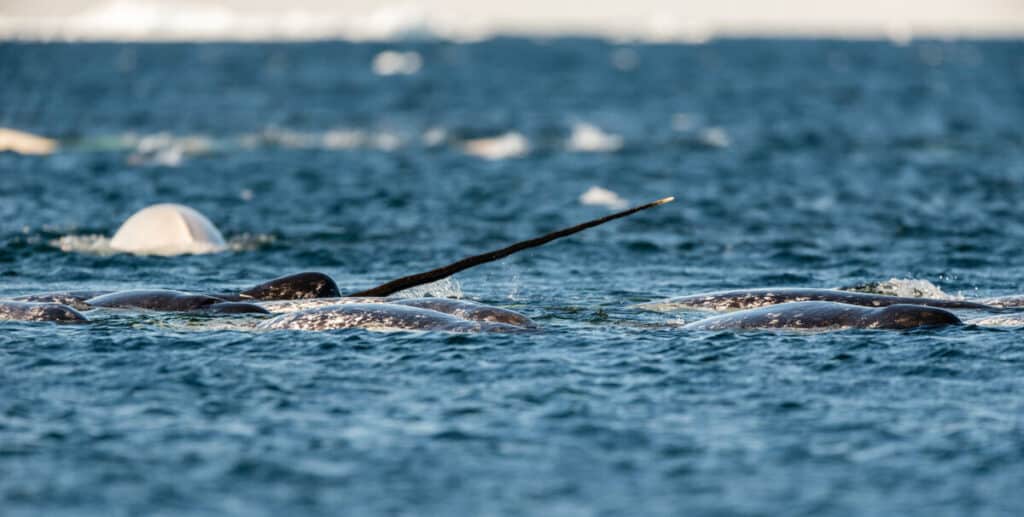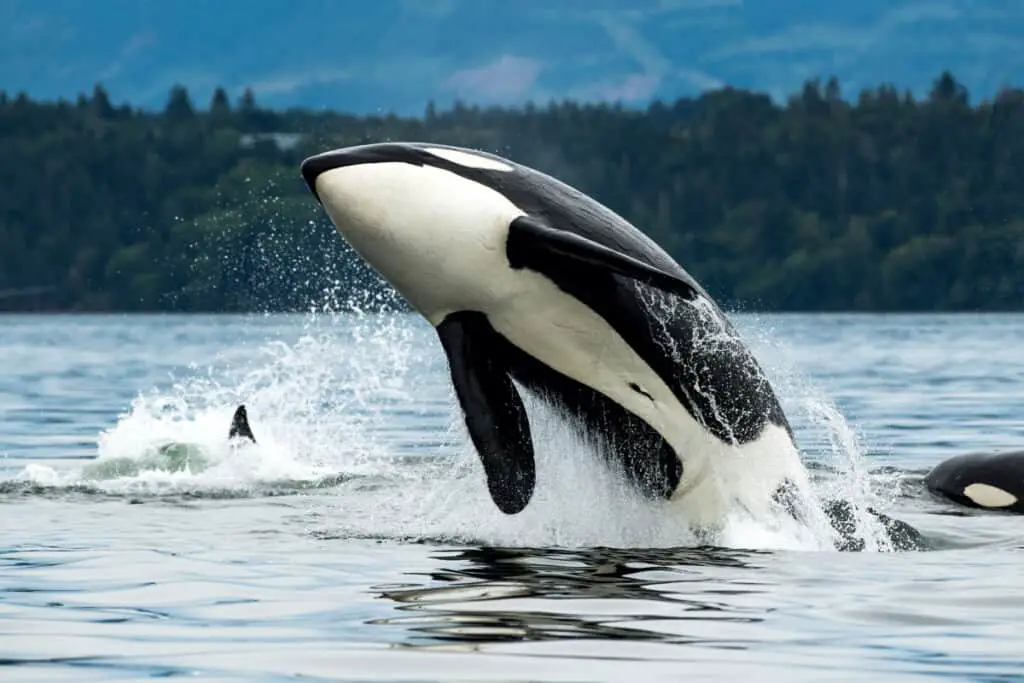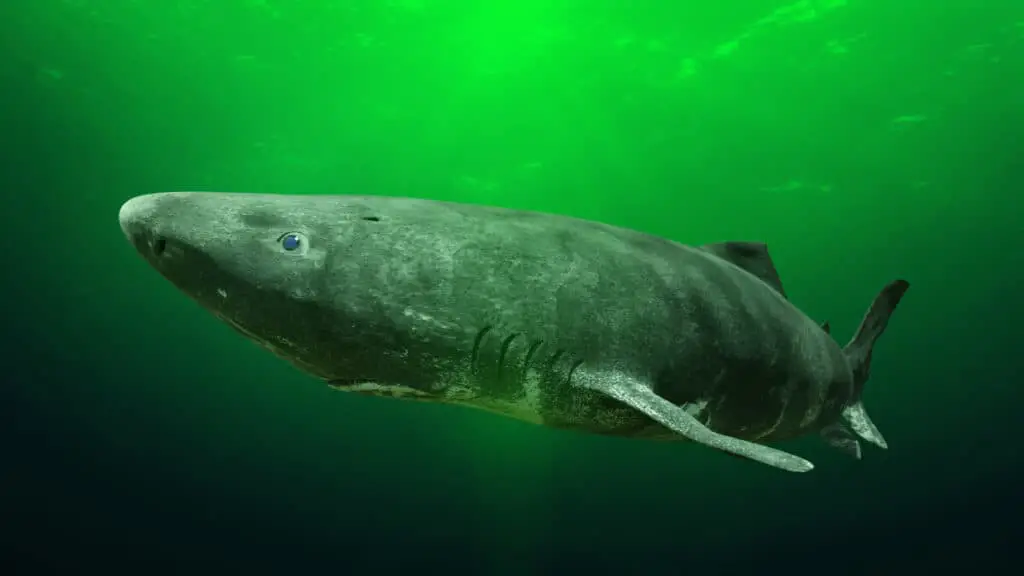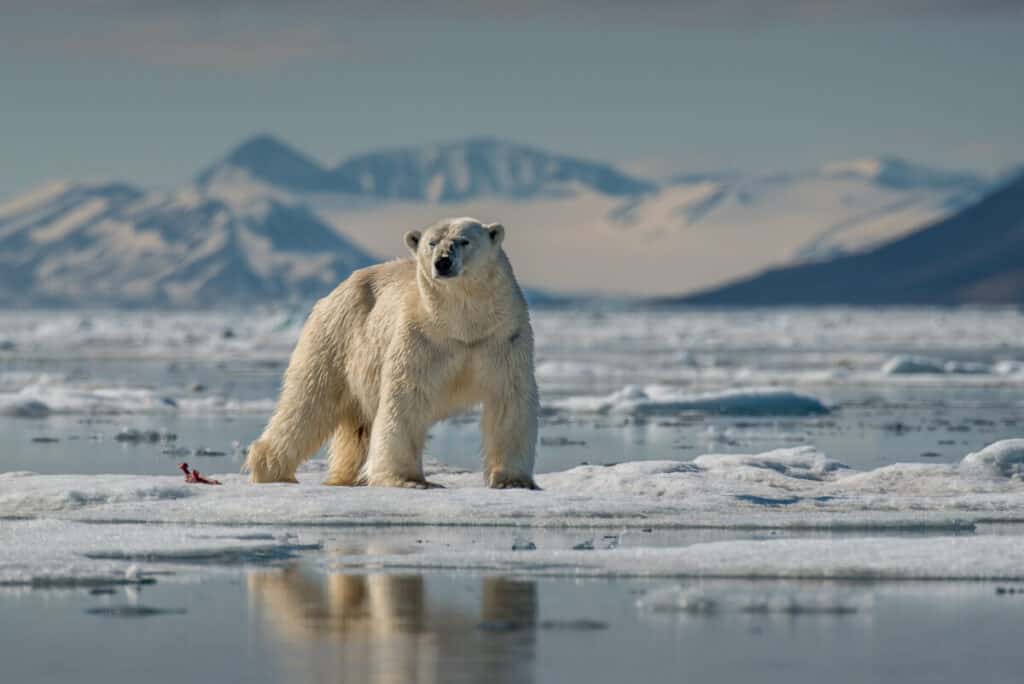Narwhals, the unicorns of the sea, are intriguing creatures that have fascinated humans for centuries. They are known for their long, spiraled tusks that can grow up to 10 feet in length and their ability to survive in some of the harshest environments on Earth. However, despite their impressive adaptations and unique qualities, narwhals are not immune to predation. In fact, there are several predators that pose a threat to these majestic creatures.
In this article, we will explore the different predators of narwhals and how they impact the survival of this species. From killer whales and Greenland sharks to polar bears and walruses, we will examine each predator’s hunting behavior and role in narwhal predation. Additionally, we will discuss how climate change is affecting narwhal predators and conservation efforts being made to protect these beloved creatures from harm.

Conservation Efforts to Protect Narwhals from Predators
Conservation efforts focused on protecting the Arctic ecosystem have been implemented to safeguard the delicate balance of life in this unique and remote region. These efforts aim to protect narwhals from predators that threaten their survival, such as polar bears, killer whales, and humans.
One significant conservation effort is the establishment of marine protected areas (MPAs), which are designated areas with regulations designed to reduce human activities that could harm marine wildlife. In 2010, Canada created an MPA covering 136,000 square kilometers in Lancaster Sound, a crucial habitat for narwhals. This MPA protects not only narwhals but also other species like beluga whales and ringed seals. Additionally, the Narwhal Inuit Management Plan was created by Inuit organizations in Canada to manage hunting quotas and promote sustainable use of narwhal resources. By implementing these conservation efforts, we can help ensure the long-term survival of narwhals and protect the fragile Arctic ecosystem they call home.

Killer Whales
Killer whales have been identified as one of the apex predators of narwhals, eliciting concern for the conservation and preservation of this unique and highly specialized species. Orcas are known to utilize various hunting strategies when targeting narwhals, including coordinated attacks that involve multiple individuals and strategic positioning in relation to ice floes or underwater features. These hunting strategies have been observed in both open water and pack ice environments, indicating that Orcas possess a high level of adaptability when it comes to narwhal predation.
The population dynamics between Orcas and narwhals are complex, with evidence suggesting that certain groups of Orcas may specialize in targeting narwhals while others do not. The extent to which these predation events impact narwhal populations is not well understood but may be significant given their low reproductive rates and limited distribution within Arctic waters. As such, continued research into the interactions between killer whales and narwhals is essential for understanding the ecological significance of these relationships and ensuring the long-term survival of both species.
The Adaptations of Narwhals in the Arctic
One remarkable aspect of the Arctic ecosystem is how narwhals have adapted to their environment. Despite facing several predators in their natural habitat, such as polar bears and killer whales, narwhals have developed unique physical characteristics for survival. These adaptations are essential for the species’ survival and allow them to thrive in one of the harshest environments on the planet.
Narwhal’s physical characteristics play a critical role in their ability to survive in the Arctic. Some of these features include their thick layer of blubber that provides insulation and buoyancy, allowing them to conserve energy while swimming through icy waters. Their long tusks, which can grow up to 10 feet long, are also believed to be an adaptation for feeding or fending off predators. Additionally, narwhal’s diet consists mainly of fish and squid found deep within Arctic waters. They use echolocation to locate prey, diving up to 1 mile deep and holding their breath for up to 25 minutes while hunting. Overall, these adaptations allow narwhals not only to survive but thrive in one of the most challenging environments on Earth.
How Good Are the Senses of a Beluga Whale: Unveiling the Sensory Abilities of Belugas

Greenland Sharks and their Role in Narwhal Predation
Greenland sharks have been observed preying on narwhals and may play a significant role in regulating the population of these Arctic whales. Studies have found that Greenland shark diet consists mainly of fish, but they also consume other marine mammals such as seals, beluga whales, and narwhals. These sharks are known for their slow growth rate and longevity, with some individuals living up to 400 years. This means that they can accumulate high levels of contaminants such as mercury and PCBs, which can affect their health and make them more susceptible to disease.
Narwhal migration patterns may also contribute to the predation risk posed by Greenland sharks. Narwhals undertake annual migrations from summer feeding grounds in the Canadian High Arctic to winter breeding areas near Baffin Island or West Greenland. During these migrations, narwhals are vulnerable to predation by Greenland sharks as they pass through narrow channels or fjords where sharks are known to aggregate. Understanding the interaction between these two species is important for managing both narwhal populations and the conservation of Greenland sharks in Arctic ecosystems.

The Hunting Behavior of Polar Bears
The hunting behavior of polar bears is a complex and crucial aspect of their survival in the Arctic ecosystem. As apex predators, they play a significant role in regulating prey populations such as seals and fish. Polar bear hunting is characterized by its opportunistic nature, as they rely on stealth, patience, and intelligence to capture their prey. They are known to hunt both on land and sea ice, with varying success rates depending on their location.
In addition to being important for polar bear survival, their hunting behavior also has implications for Arctic ecosystem dynamics. Due to climate change, sea ice has been rapidly declining in the Arctic region, which affects not only polar bears but also other animals that depend on it for survival. This shift in habitat availability can lead to changes in predator-prey relationships and potentially alter food webs within the ecosystem. Thus, understanding the intricacies of polar bear hunting behavior is essential for comprehending how Arctic ecosystems may adapt and evolve under changing conditions.
- Polar bears rely on stealth and patience when hunting.
- They hunt both on land and sea ice.
- Climate change affects not only polar bears but also other animals that depend on sea ice.
- Understanding polar bear hunting behavior is important for comprehending how Arctic ecosystems may adapt to changing conditions.
Walruses: Surprising Narwhal Predators
Walruses, a marine mammal known for their iconic tusks and vocal calls, have been observed preying on narwhals, which has surprised scientists. Walruses are typically considered to be herbivores, feeding on clams and other benthic organisms found in the Arctic region. However, recent studies have shown that they also engage in carnivorous behavior by targeting unsuspecting narwhals.
Walruses’ hunting tactics involve following narwhals as they surface for air and then ambushing them when they return to the water. Narwhals are not equipped with natural defenses against such predators, making them easy prey for walruses. This predation has significant implications for both species as it can impact the population size of walruses and alter the ecological balance of the region. Therefore, further research is needed to understand the extent of this predator-prey relationship between these two Arctic species.
The Impact of Climate Change on Narwhal Predators
While walruses may seem like unlikely predators of narwhals, their presence in the Arctic has been documented as a threat to these elusive creatures. However, with the ongoing effects of climate change on the Arctic ecosystem, other potential predators of narwhals are also being impacted.
One major factor affecting narwhal predators is the changing migration patterns of these whales. As ice cover decreases and water temperatures warm, narwhals are shifting their migration routes and timing in search of better food availability. This can lead them into new areas where they may encounter different predator species or be at greater risk from existing ones. Additionally, changes in prey populations due to warming waters and altered ocean currents could impact predator behavior and increase competition for limited resources. Understanding how climate change is altering both narwhal migration and predator dynamics is crucial for managing conservation efforts in this fragile ecosystem.
Conclusion
In conclusion, narwhals have several natural predators in their Arctic habitat. Killer whales are the main predator of narwhals and rely on their group hunting tactics to capture their prey. Narwhals have adaptations such as their tusk and diving capabilities that help them evade these predators. Greenland sharks also play a role in preying on narwhals, although less is known about this relationship. Polar bears and walruses are also surprising yet formidable predators of narwhals.
Climate change poses a threat to the Arctic ecosystem and may impact narwhal populations by altering predator-prey relationships. Conservation efforts to protect narwhals from predation include reducing anthropogenic threats such as noise pollution and increasing awareness of the importance of protecting Arctic ecosystems. Further research is needed to better understand the complex predator-prey relationships between narwhals and other Arctic animals, which will be crucial for developing effective conservation strategies for this unique species.
